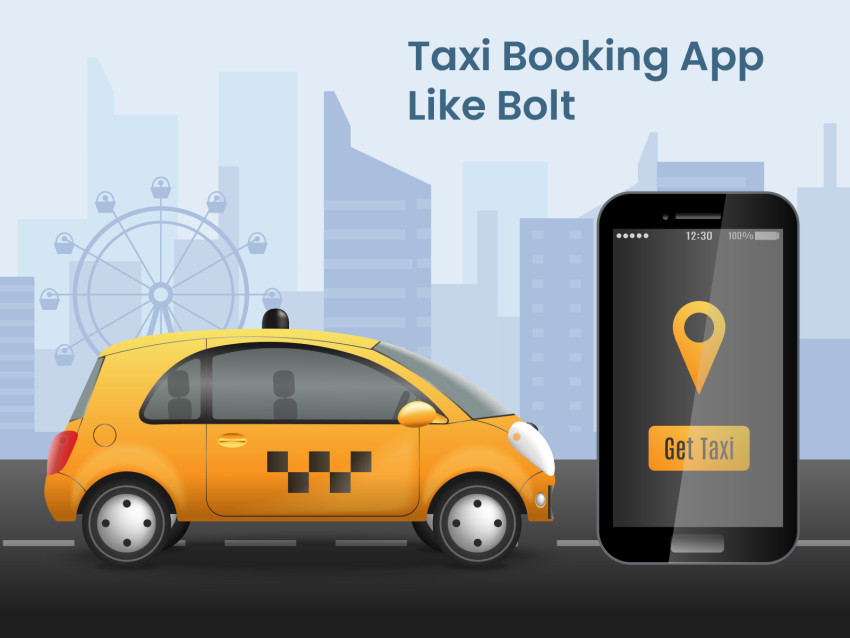
A ride-hailing app, also known as a ride-sharing or taxi app, is a mobile application that connects passengers in need of transportation with drivers who offer their services through the platform. These apps have revolutionized the way people access and use transportation services, making it convenient and efficient to book rides with just a few taps on a smartphone. Users typically open the app, specify their pick-up and drop-off locations, choose the type of vehicle they prefer, and request a ride.
The app then matches the passenger with a nearby driver, providing real-time tracking and estimated arrival times. Payment is often processed through the app, offering cashless transactions. Ride-hailing apps have transformed the traditional taxi industry, offering advantages like competitive pricing, enhanced safety features, and improved convenience. Popular examples include Uber, Lyft, and Bolt.
What is the Bolt App?
Bolt is a ride-hailing and transportation network company that provides on-demand transportation app development services through its mobile app. Formerly known as Taxify, Bolt offers a platform that connects passengers with drivers who operate their own vehicles? The company was established in 2014 and today has become a multinational on demand taxi booking app development service provider. It provides taxi booking services in more than 45 European, African & Asian countries.
Bolt has gained popularity as a significant player in the ride-hailing industry and is known for its commitment to providing reliable, affordable, and safe transportation services to users in various regions.
Key Features of Taxi Apps like Bolt
1. Ride-Hailing Service: Bolt primarily offers ride-hailing services, allowing passengers to request rides using their smartphone. Users can specify their pick-up and drop-off locations and choose the type of vehicle they want to ride in.
2. Cashless Payment: The Bolt app facilitates cashless payments, with users typically linking their credit card or digital wallet to the app. This makes transactions convenient and secure.
3. Real-Time Tracking: Passengers can track the location of their assigned driver in real-time using the app, which helps estimate the arrival time and provides an added layer of safety.
4. Driver Ratings: Bolt allows passengers to rate their drivers and provide feedback, ensuring a level of quality control and accountability within the platform.
5. Safety Features: The app often includes safety features such as sharing trip details with contacts, an SOS button for emergencies, and driver background checks to enhance the safety of passengers.
6. Affordable Pricing: Bolt typically offers competitive pricing, which can make it an attractive alternative to traditional taxis and other ride-hailing services.
7. Wide Availability: Bolt operates in numerous cities and countries across the globe, providing transportation services to a broad user base.
8. Additional Services: In addition to standard ride-hailing, Bolt may offer additional services like food delivery and electric scooter rentals in some markets.
Cost to Make a Ride-Hailing App Similar to Bolt
Creating a ride-hailing app similar to Bolt involves several factors that impact the overall cost. Understanding the various elements that impact the expenses of building a ride-hailing app enables you to make more informed decisions when structuring your project budget. This knowledge allows you to weigh the significance of each factor and make strategic choices in your development process. By carefully considering these factors, you can identify opportunities to optimize costs while maximizing the return on investment for your on-demand taxi booking platform. In essence, having a comprehensive grasp of these cost-influencing variables empowers you to tailor your app development strategy, potentially resulting in a more cost-effective and profitable product.
1. App Development: The largest portion of the budget will be allocated to the development of the mobile app for both passengers and drivers. This includes the cost of hiring developers, designers, and testers. Expenses vary depending on the complexity and features of the app, but a high-quality ride-hailing app typically requires a significant investment.
2. Technology Stack: The choice of technologies, platforms (iOS, Android), and infrastructure for your app plays a crucial role in cost estimation. Building for both iOS and Android will be more expensive than developing for just one platform.
3. Backend Infrastructure: The backend server, database, and cloud hosting are fundamental for the functionality of the app. Costs for server maintenance, database management, and cloud services will be an ongoing expense.
4. Mapping and GPS Integration: A ride-hailing app heavily relies on accurate mapping and GPS services. Licensing these services can be a recurring cost, and integration requires development efforts.


